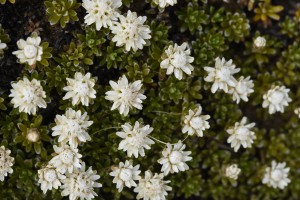Banks and Solander prints
In this section
-
Visiting Te Rauhītanga – The Gathering Place
- Kōwhaiwhai
- A story of Haumia Tiketike – He kōrero mō Haumia Tiketike
- A story of Rongo – He korero mō Rongo
- A story of Tāne – He kōrero mō Tāne
- Carvings – Whakairo
- The names of our buildings
- The names of our meeting rooms
- Virtual reality: Karanga a Tāne Mahuta
- Rene Orchiston Flax Collection – He Kohinga harakeke nā Rene Orchiston
- Banks and Solander prints
- Invertebrate illustrations
- Biodiversity display
- Weed and predator control display
- Land video wall
- Historic soil maps
- Soil classification illustrations
- Augmented reality sandpit
- Beech tree cores
Banks and Solander worked closely with botanical illustrators, including their fellow traveller Sydney Parkinson, to produce watercolour illustrations of the specimens they were collecting. After their return to England the botanists commissioned copperplate line engravings of the illustrations. Solander’s untimely death in 1782 and Banks’s waning interest stopped the work early. This meant only 735 engravings were made and the botanical results of the expedition were never published.
Several sets of black-and-white prints made from the engravings depicting species from New Zealand, Australia, Brazil, the Society Islands and Tierra del Fuego were gifted to New Zealand in the late nineteenth century.
The New Zealand engravings, representing some 180 species, were intended to illustrate Thomas Kirk’s Students’ Flora of New Zealand and the Outlying Islands. However, Thomas Kirk died before completing this work, and the engravings were never published. Manaaki Whenua – Landcare Research holds several of these original printer’s proofs.
Banks’ Florilegium was eventually published in 34 parts during the 1980s and contains hundreds of stunning colour copperplate engravings.
Pōhutukawa
Metrosideros excelsa
The pōhutukawa, with its red flowers, sits on the boundary between land and sea and is regarded as a chiefly tree. It features in legend and spiritual ceremonies, was sometimes planted to mark sacred sites, and has various medicinal uses. The hard wood of the pōhutukawa was used for boat building and for making implements.
“Legends tell of Tawhaki, a young Māori warrior, who attempted to find heaven to seek help in avenging the death of his father. He fell to earth and the crimson flowers are said to represent his blood. A gnarled, twisted pohutukawa on the windswept cliff top at Cape Reinga, the northern tip of New Zealand, has become of great significance to many New Zealanders. For Māori this small, venerated pohutukawa is known as ‘the place of leaping’. It is from here that the spirits of the dead begin their journey to their traditional homeland of Hawaiki. From this point the spirits leap off the headland and climb down the roots of the 800-year-old tree, descending into the underworld on their return journey.”
Kākābeak, Ngutukākā
Clianthus maximus
Māori appreciated plants with red flowers, a colour denoting high status and mana, and the kakabeak was cultivated in villages as an ornamental, because of its beauty, rather than usefulness. Kakabeak was considered aesthetically pleasing, and was used for gifting and trading.
Cork tree, Whau
Entelea arborescens
The distinctive leaves and seeds look very like aute (paper mulberry plant (Broussonetia papyrifera)), which the early Polynesian settlers brought to Aotearoa New Zealand to make tapa cloth. The wood is exceptionally light and was used by Māori to make floats for fishing nets, and in addition trunks were lashed together to make small rafts.


![Flowering [Pennantia baylisiana]. Image: Bradley White](/assets/Discover-Our-Research/Biodiversity/Plants-fungi-arthropods-bacteria/plant-systematics/flowering_pennantia_baylisiana-v2__FillMaxWzMwMCwyMDBd.jpg)